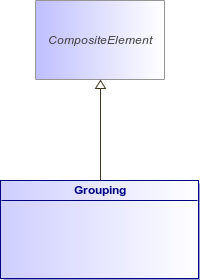
ArchiMate Metamodel
The grouping element is used to group an arbitrary group of concepts (elements and/or relationships), which can be of the same type or of different types. The aggregation relationship is used to link the grouping element to the grouped concepts.
Concepts may be aggregated by multiple (overlapping) groups.
All types of relationships (apart from aggregation or composition) may exist from or to a grouping:
- Such a relationship from a grouping means that all the elements that are aggregated in the grouping together have that relationship with the target element (but only those elements for which this relationship is allowed). This is equivalent to an and-junction on that relationship, as explained in Section 5.4.3 and shown in Example 13.
- Such a relationship to a group means that the source element has that relationship with every element in the group, provided this relationship is allowed.
One useful way of employing grouping is for modeling Architecture and Solution Building Blocks (ABBs and SBBs), as described in the TOGAF framework.
Another useful application of grouping is for modeling domains. For example, the TOGAF framework Glossary of Supplementary Definition (Section A.40) defines Information Domain as: "grouping of information (or data entities) by a set of criteria such as security classification, ownership, location, etc. In the context of security, Information Domains are defined as a set of users, their information objects, and a security policy".
